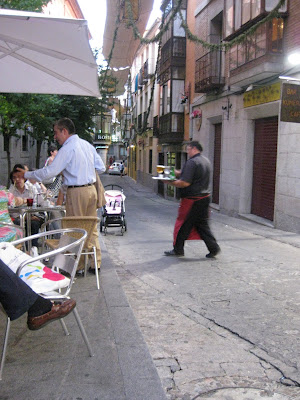Ships that pass in the night, and speak each other in passing, only a signal shown, and a distant voice in the darkness; So on the ocean of life, we pass and speak to one another, only a look and a voice, then darkness again and a silence.
Henry Wadsworth Longfellow
Days come and go at the Villa Poggiale, people check in and leave, departing for new destinations and adventures. Their stay is usually brief, a day or two at most. Villa Poggiale has little to keep its weary travelers here for very long, only the solitude of being away from the lights and activity of the city of Florence.
Of those who stayed for awhile, first there was the "office," actually a group of wedding photographers who had gathered at Villa Poggiale to study under Jeff (I forget his last name, but know that he was Australian, and well-known as he was always described to me.) As the office was a self-contained group our speaking was limited to questions of how to connect to the wi-fi. Jeff's wife, a cute thing with a stylish bob hairstyle, was always on the computer when not involved in the groups' activities.
Then there were Rupert and Katie from England, he a HP sales director, who along with his wife was getting away form the drudgeries of business. "competition is fierce," was all that he would allow when talking business, but who wants to bring troubles with them on a holiday.
As for the rest, mostly they come for a night and a day to recharge their batteries before the next stop. The family from Singapore, the father bald headed and austere, who smoked a cigar at meals, and his daughter who offered us a piece of their mother's birthday cake at breakfast. English, American, Dutch, German, and Italian, the guest come from everywhere, ships passing in the darkness with a brief "bon giorno" or other greeting, and that is it.



















































